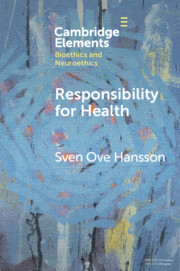Element contents
Responsibility for Health
Published online by Cambridge University Press: 19 July 2022
Summary
- Type
- Element
- Information
- Online ISBN: 9781009247290Publisher: Cambridge University PressPrint publication: 11 August 2022
References
- 17
- Cited by

